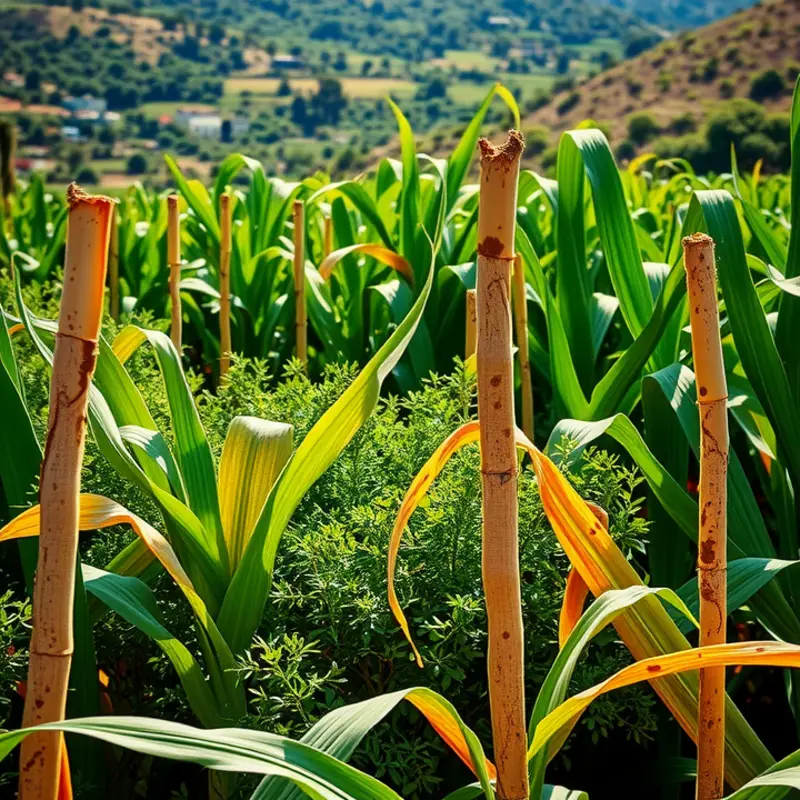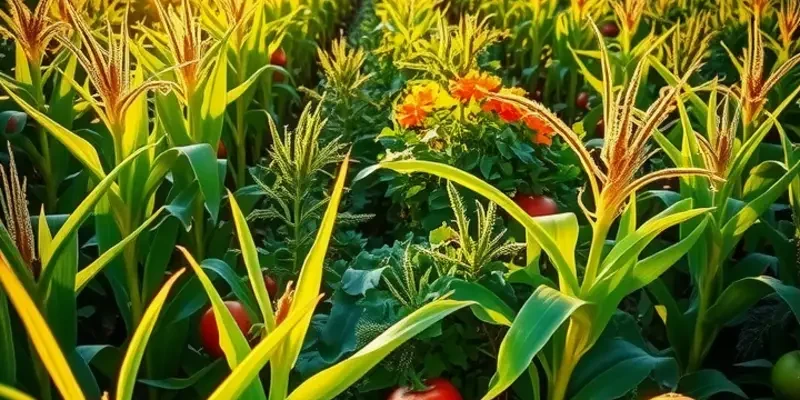South Africa’s culinary landscape is a rich tapestry woven from a myriad of cultural influences. From indigenous tribes to colonial settlers, each group has contributed unique ingredients, techniques, and flavors to the nation’s cuisine. For food enthusiasts and culturally curious readers alike, there’s a world of exciting culinary traditions waiting to be explored. This vibrant fusion of flavors not only tells the story of its people but also invites everyone to partake in its delicious history.
A Flavorful Heritage: The Ingredients of South African Cuisine

South African cuisine is a mosaic of flavors rooted deeply in its rich, cultural tapestry. Central to the culinary identity of this diverse nation is maize, known locally as ‘mealies.’ This staple ingredient, enjoyed since the times of indigenous communities, is used in various forms, from fermented porridge known as umqombothi to the creamy pap enjoyed with grilled meat.
The country’s varied climate provides an abundance of indigenous plants. Amadumbe, a type of yam, is a staple in many South African kitchens. Its earthy flavor and nutritional value make it a favorite, often boiled or roasted, serving as a perfect complement to stews.
Moving to the influence of international cuisines, spices play a pivotal role. The Cape Malay community, for instance, introduces a melange of aromatic ingredients such as cardamom and turmeric to the culinary scene. These spices are fundamental in dishes like bobotie, a curried meat dish with a custard topping, symbolizing the fusion of diverse culinary heritages.
Biltong, the beloved dried, cured meat, symbolizes the spirit of South African ingenuity. Originating as a preservation method, it has become a beloved snack. Its preparation varies significantly, ranging from traditional beef to versions with game meat like kudu or springbok, showcasing the country’s rich biodiversity.
Local communities hold these ingredients in high esteem, not just for sustenance but also for their cultural significance. For example, roosterkoek is more than bread; it speaks to gatherings around a fire, where stories are shared, and bonds are strengthened.
Interestingly, the global footprint on South African cuisine is unmistakable. The historic spice trade brought not only foreign spices but also cooking techniques and philosophies. This blend is seen in dishes that seamlessly incorporate both indigenous and foreign elements, emphasizing the cuisine’s adaptability and openness.
For those eager to dive deeper into the world of spices and their influence, exploring global culinary influences can provide further insight into how these ingredients traveled to South African shores. Discover more about the culinary influences of trade in this detailed exploration.
The significance of these ingredients extends beyond their taste; they connect generations and tell stories of migration, adaptation, and community. South African cuisine, with its broad use of unique and celebrated ingredients, continues to evolve while staying rooted in its rich, flavorful heritage.
Celebratory Feasts: The Role of Food in South African Culture

South African celebrations are as vibrant as the flavors that adorn their tables. Food is not just a side note but a central character in these festivities. From weddings to initiation ceremonies, and festivals like Heritage Day, the feasts are as diverse as the communities that comprise the nation.
A quintessential element of South African celebrations is the braai, akin to a barbecue but carrying deep cultural significance. A braai is not just about grilling meat; it’s about gathering people, sharing stories, and celebrating unity. Traditional meats such as boerewors, sosaties, and springbok steaks sizzle over open flames, seasoned with local spices that tell tales of ancient lands and trade routes. It’s a practice embedded in social fabric, symbolizing togetherness and leisurely afternoons where time seems to pause.
In the rural regions and during larger gatherings, the potjiekos takes center stage. This slow-cooked dish, prepared in a cast-iron pot, is a reminder of South Africa’s Dutch colonial influence. Layers of meat, vegetables, and spices are left to simmer, each bite soaking in the flavors of shared history and patience. The communal cooking process not only enhances flavors but also represents community collaboration, an essential part of many celebrations.
Bunny chow showcases the Indian influence that is an integral part of South African culinary identity. Hollowed-out loaves of bread, filled with spicy curry, reflect a fusion of cultures through food, celebrating diversity during informal and formal gatherings alike.
Feasts marking rites of passage further illustrate the depth of food’s role in South Africa. Traditional dishes such as umqombothi, a homemade beer made from local grains, are pivotal in initiation ceremonies. These events mark vital transitions in life, with food symbolizing abundance, blessing, and continuity.
The influence of coastal communities is captured through dishes such as snoek braai, where freshly caught fish is grilled with apricot jam or lemon, highlighting resourcefulness and the wealth of the sea. Such meals tie generations together, blending indigenous practices with colonial culinary elements.
In a multicultural society, exploring culinary heritage offers not just a taste of history but a glimpse into shared identities and collective memory. Celebratory meals foster unity and respect among varied cultures, each dish telling a story of migration, adaptation, and harmony. For those curious about how culinary history shapes current tastes, this article on culinary influences provides further insights into the dynamic interplay of historical trade and local ingredients.
In South Africa, food transcends mere sustenance; it is a celebration of culture, a silent yet flavorful ambassador of heritage. The sharing of meals during festivals and special occasions continues to knit the diverse population together, one flavorful bite at a time.
Final words
The story of South African cuisine is one of resilience, adaptation, and celebration. Its diverse ingredients and flavors offer a tantalizing glimpse into the country’s rich cultural heritage. From the simple maize dishes of the indigenous peoples to the braais that bring communities together, every meal is steeped in meaning. Understanding these culinary customs not only enriches our palates but also deepens our appreciation for the cultural narratives that shape them. Whether sampling boerewors for the first time or cooking a traditional potjiekos, each culinary encounter is a step into the soul of the Rainbow Nation.








